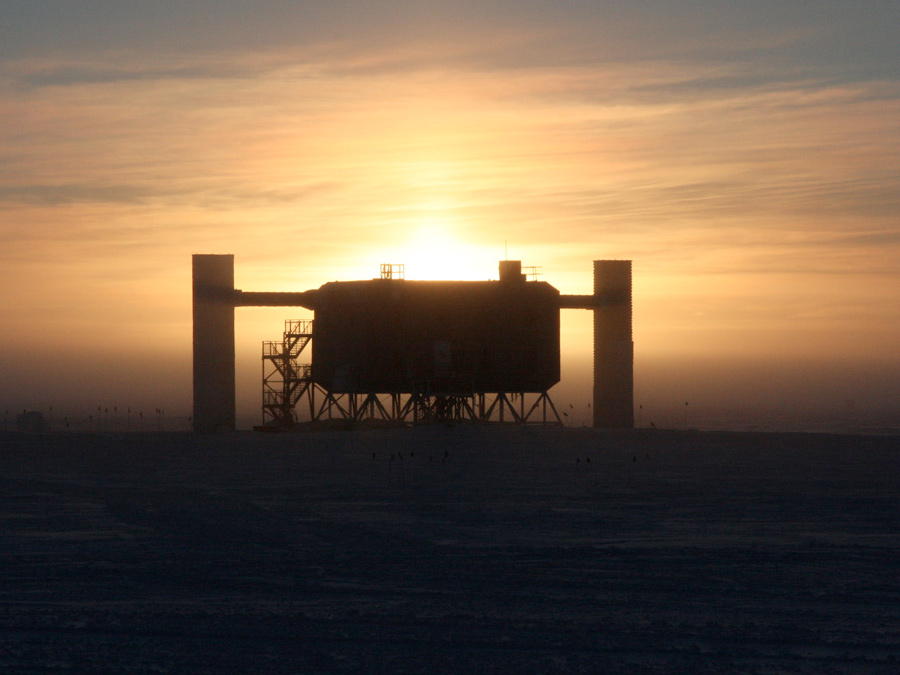New results from antarctic neutrino-detector IceCube:
Doubts about gamma ray bursts as the source of cosmic radiation

On an almost daily basis, astronomers observe bursts of gamma radiation that, for a few seconds, light up brighter than the rest of the universe. Alongside space telescopes, experiments on the surface of the Earth have been contributing significantly to the exploration of cosmic radiation for a number of years now. Among these experiments is IceCube, a neutrino telescope at the South Pole. The detector comprises a cubic kilometer of frozen ice and is equipped with more than 5000 optical sensors. Buried up to 2.5 km beneath the surface of the Antarctic ice. At the Technische Universität München (TUM) physicist Professor Elisa Resconi is member of the IceCube collaboration.
Hitherto, researchers have operated on the assumption that these high-energy particles have two possible sources: massive black holes at the centers of active galaxies and gamma ray bursts (GRBs) resulting from exploding, heavy stars that collapse to black holes. In the renowned journal “nature”, the IceCube collaboration is now reporting on a groundbreaking discovery that may disprove one of the leading theories on the source of cosmic rays.
IceCube observes neutrinos by detecting weak flashes of blue light that appear when muons pass through the ice of the detector. The muons are, in turn, byproducts of the high-energy neutrinos of the cosmic source. Neutrinos are electrically neutral particles of very small mass. They appear merely as byproducts in decay or mutation processes. Due to their electrically neutral properties, neutrinos are not deflected by the magnetic fields of the cosmos, the sun or the Earth and therefore easily pass through our planet and all of its life forms.
Cosmic rays consist primarily of very high-energy protons. When these collide with matter, neutrinos are created. Hence, the researchers assume that the cosmic ray sources must also be neutrino sources. Over a period of two years, the IceCube collaboration thus investigated 300 gamma ray bursts, looking for the ostensibly associated neutrinos. But against all expectations, the researchers found no neutrinos and consequently were able to virtually exclude GRBs as a possible source of cosmic radiation. The current IceCube measurements are thus fueling further research efforts on the true source of cosmic rays.
Technical University of Munich
Corporate Communications Center
- Dr. Andreas Battenberg
- battenberg@zv.tum.de
- presse@tum.de
- Teamwebsite